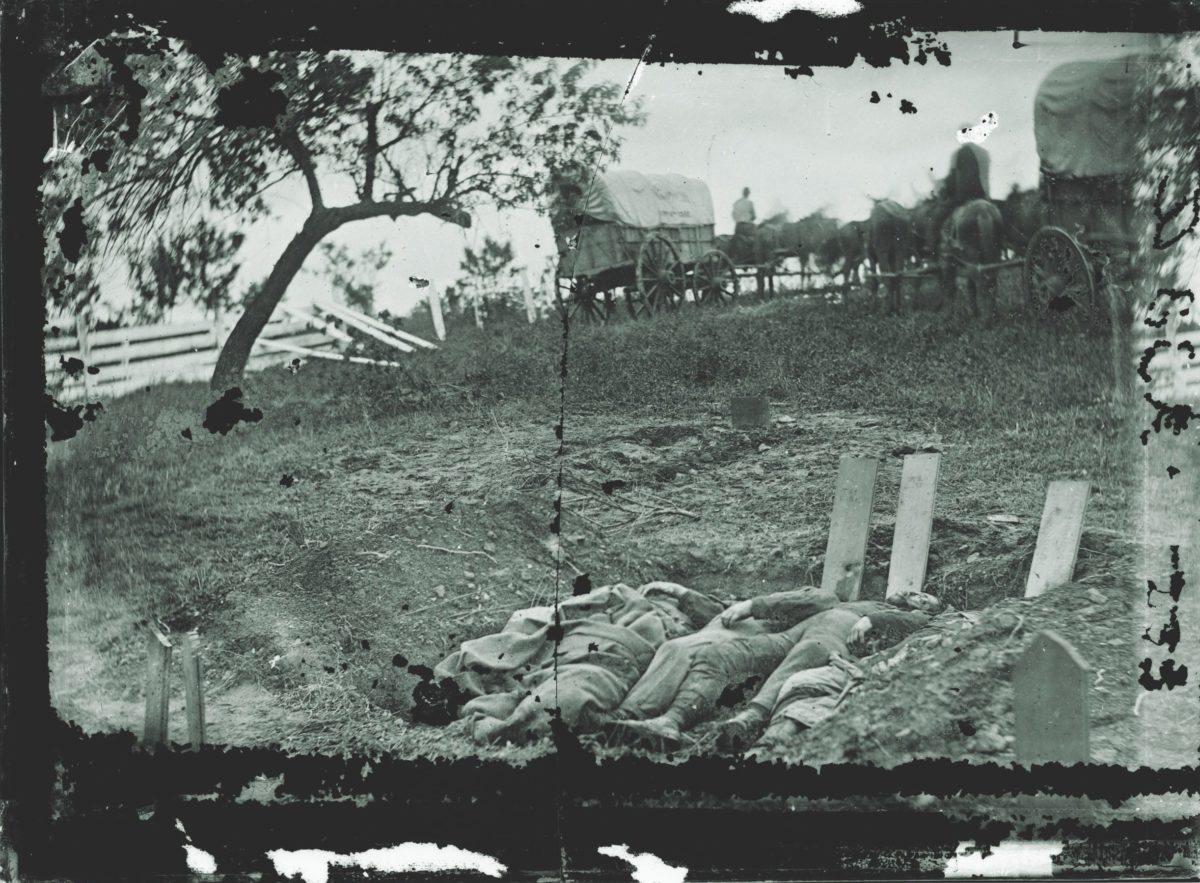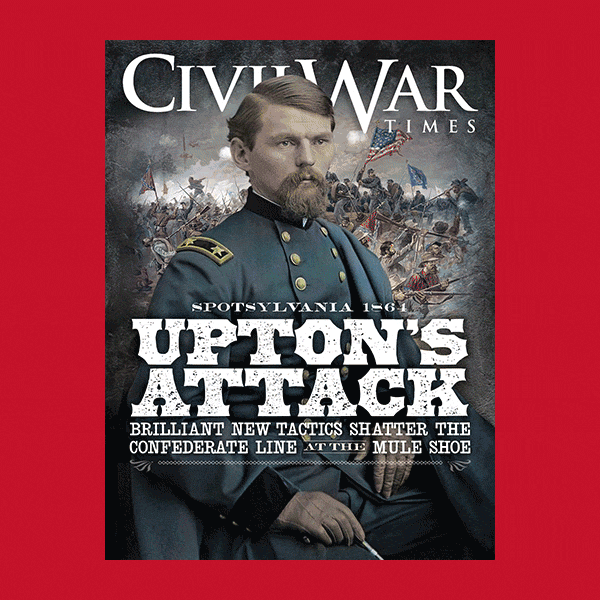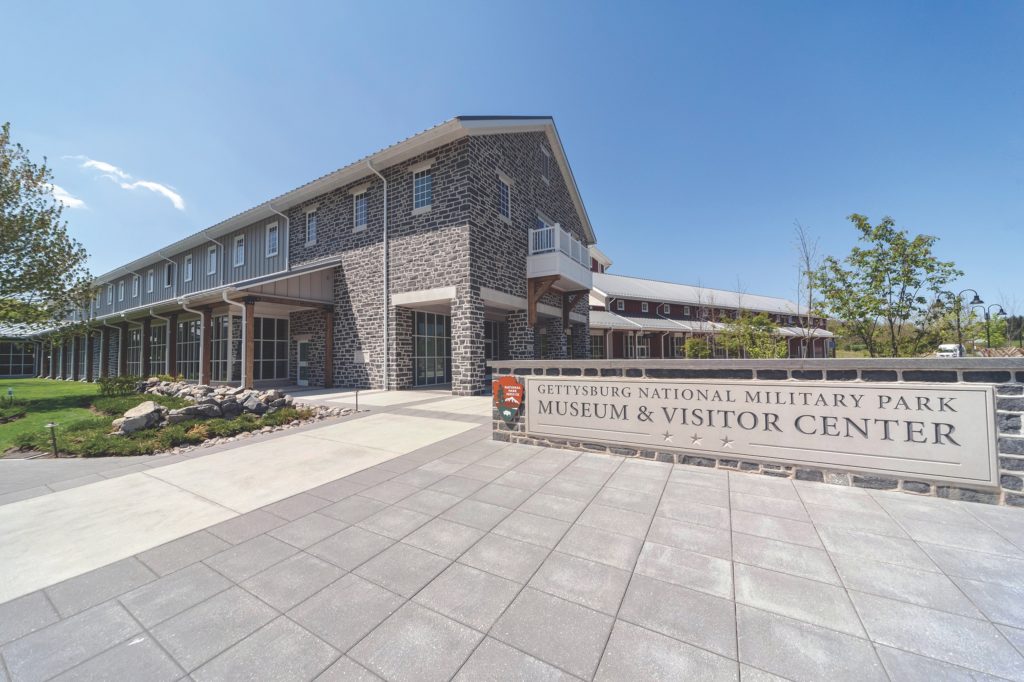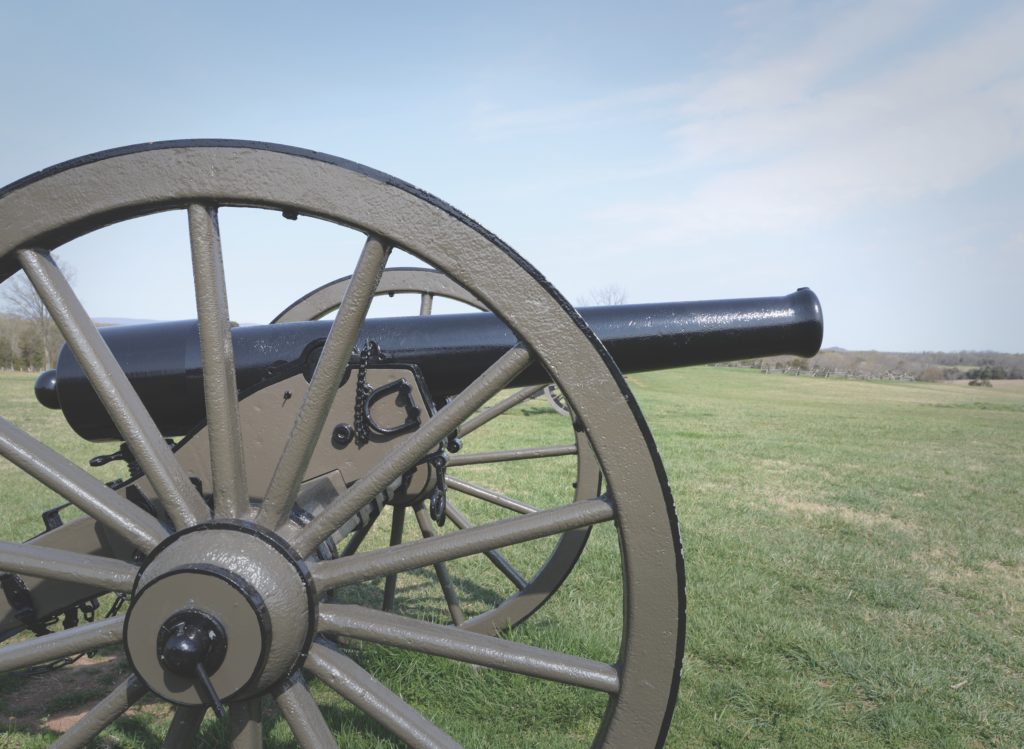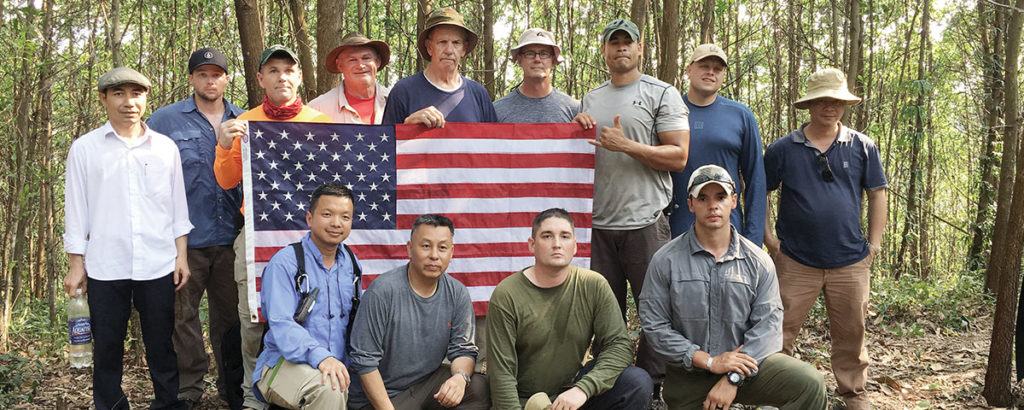For three hot summers, Rufus Weaver toiled to retrieve Confederate soldiers’ remains from crude Gettysburg battlefield graves. His efforts to get paid for his hard work proved to be nearly as difficult.
In 1889, Weaver wrote to his friend, Ada Egerton: “Over 16 years have now passed away and today over twelve thousand dollars (including interest) is due me without a line from any of those interested in the debt—debt which you have often truly said is one of ‘Sacred honor.’” Weaver certainly had a right to be aggrieved, for $12,000 in 1889 is the equivalent of more than $350,000 today.
How did this happen? How could an obligation of this size have been created? Weaver was not some Wall Street financier or speculator in land or railroad stocks. He was a physician and a lecturer in human anatomy at a medical school in Philadelphia. Who could possibly owe him a sum of that size?
The original obligation was created in the decade following the end of the Civil War, when Southern women sought to provide proper resting places for their fallen husbands, sons, and fathers. At the end of the war, tens of thousands of soldiers’ graves dotted battlefields from Pennsylvania to Louisiana. Soldiers were generally buried where they fell, and any farmer’s field was likely to contain a grave.
Unmarked Graves
The area around Gettysburg, Pa., was no exception. It is estimated that approximately 7,800 men were killed during the three days of that battle. Nearly all were buried hastily. Some graves were marked, other graves were simply trenches holding dozens of bodies, unmarked except for signs indicating the number of bodies therein. During the nine months following the fight, the bodies of 3,354 Union soldiers were exhumed and reburied in Soldiers’ National Cemetery, dedicated in November 1863. The bodies of Confederate soldiers were left where they lay.
As the U.S. Army advanced over old battlefields during the final year of the war, it discovered that many men had been buried improperly. In some cases, skeletons wearing tattered Union uniforms lay in plain sight. Acting under the authority of an 1862 act of Congress, the War Department began to rebury the Union dead into what became known as “national” cemeteries.
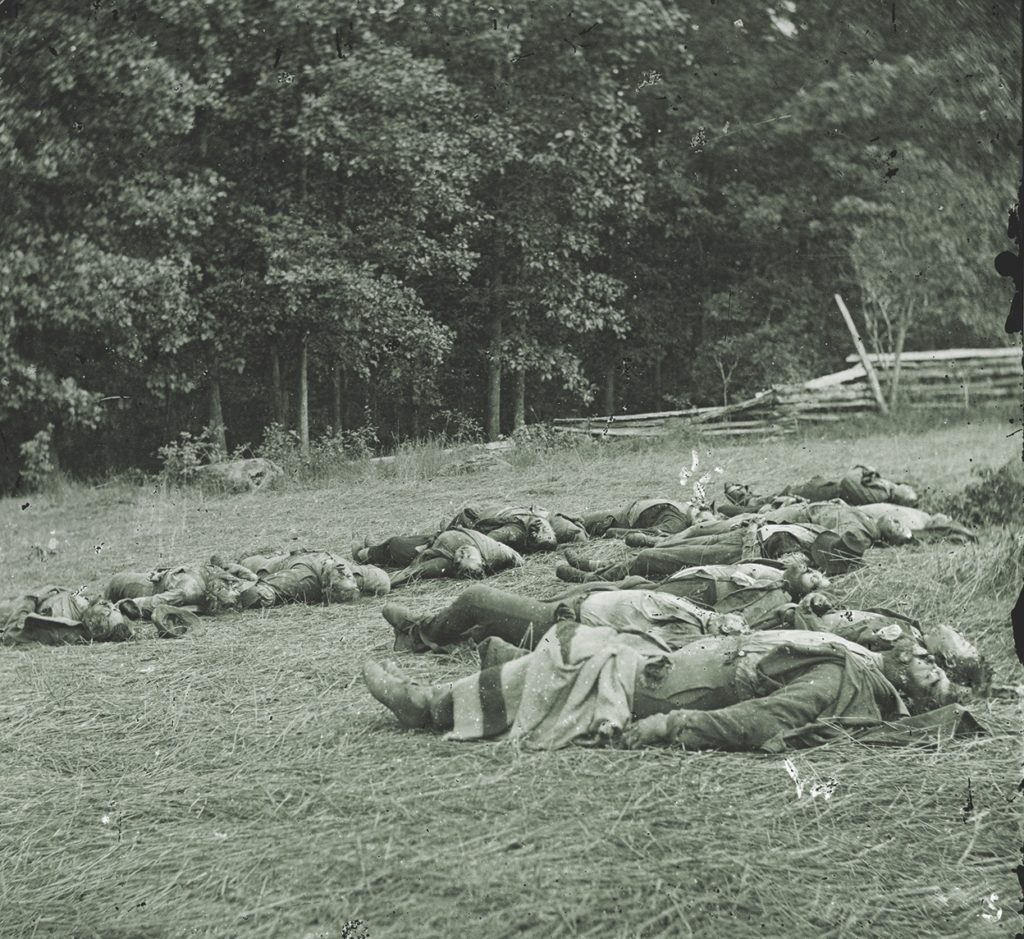
There the graves of soldiers who fought to preserve the Union were protected, cared for, and decorated on the new holiday known as Memorial Day. Once again, Confederate dead were not welcome in those cemeteries. This rankled many Southerners, so the ladies of the South took it upon themselves to care for the fallen as they had cared for the wounded soldiers who had fought for “the Cause.”
Watchers over the dead
A Ladies Memorial Association was established in almost every major city in the South, its purpose being to care for the graves of Confederate dead. In some cases, that was merely a matter of decorating the graves in existing cemeteries, but in places like Winchester, Va., where a great deal of fighting had occurred in surrounding areas, there was more work to do but precious few resources with which to do it. An appeal published in newspapers across the South raised enough money to allow the ladies to buy land and gather the remains of 2,489 Confederate soldiers who had been buried in scattered places across the lower Shenandoah Valley.
With great ceremony, they were reburied in the new Stonewall Cemetery in Winchester, Va., dedicated in 1866. However, the graves of men who had fallen in far-off places like Antietam and Gettysburg were beyond the ladies’ reach, both physically and financially. Some individual families were able to make the trek, but operations on a mass scale would have to wait until the South recovered financially.
Reports began to reach Southern ears in the summer of 1869 that the Northern graves of their fallen sons were being obliterated by years of plowing and neglect. The ladies of the South sprang into action, and before the end of the year the Ladies Memorial Associations of Charleston, Raleigh, Richmond, and Savannah were raising funds to pay for the exhumation, transfer, and reburial in their native soil of the fallen soldiers from their states.
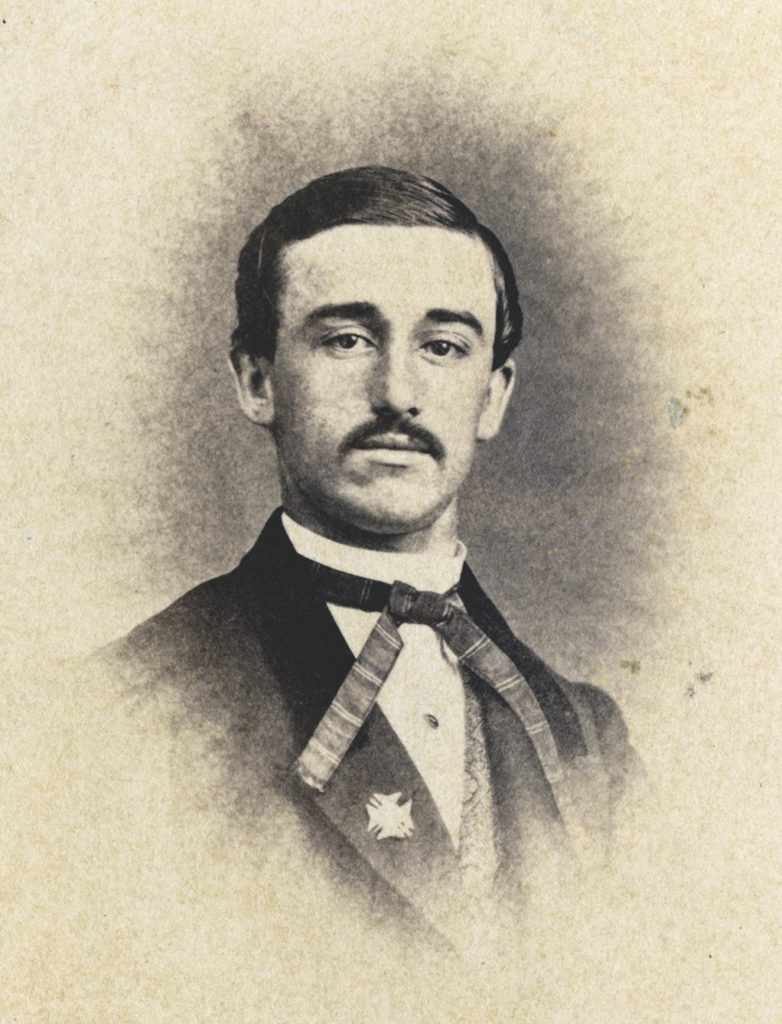
The women appealed to a man named Samuel Weaver, who had been responsible in 1863 for transferring the remains of fallen Union soldiers into the Soldiers’ National Cemetery in Gettysburg. Weaver must have been a compassionate man, or perhaps he sensed a future business opportunity, for he made a record of Confederate graves where he found them. His list would be the starting point for those wishing to locate Southern remains.
Unfortunately for the ladies of the South, Samuel Weaver was killed in a railroad accident in February 1871. His list, however, had passed into the hands of his son, Rufus.
The Life and Death of Dr. Rufus Weaver
Rufus Weaver was born in Gettysburg in 1841 and graduated from Pennsylvania (now Gettysburg) College in 1862. Upon graduating, Rufus went to Philadelphia to study anatomy, with the goal of becoming a doctor. By the spring of 1871, he was a lecturer in anatomy at Hahnemann Medical College. Besides being in possession of his father’s lists, his knowledge of human anatomy prepared him for the business of recognizing and retrieving human remains.
During the spring and summer of 1871, Dr. Weaver labored for the ladies of the Charleston, S.C., Savannah, Ga., and Wake County (Raleigh, N.C.) Memorial Associations to exhume soldiers from those states and ship them home. Eighty-four sets of remains were sent to Charleston, where a dedication ceremony was held on May 10, 1871.
The majority of those remains were retrieved from the Rose Farm, across which Brig. Gen. Joseph Kershaw’s Brigade advanced on the afternoon of July 2, and from the cemetery and orchard near the Black Horse Tavern on the Fairfield Road, which served as the field hospital for Kershaw’s Brigade. A dozen more were removed from the cemetery at Camp Letterman, the large general hospital managed by the Army of the Potomac’s medical corps, located on the York Road east of Gettysburg.
Apparently, farmer John Rose was not sympathetic to their mission. According to an article written in 1929, Rose refused to let the bodies be removed unless the ladies were willing to pay for them. The perseverance of the president of the association, however, “aided by [an unnamed] farmer’s wife,” finally secured his permission without compensation.
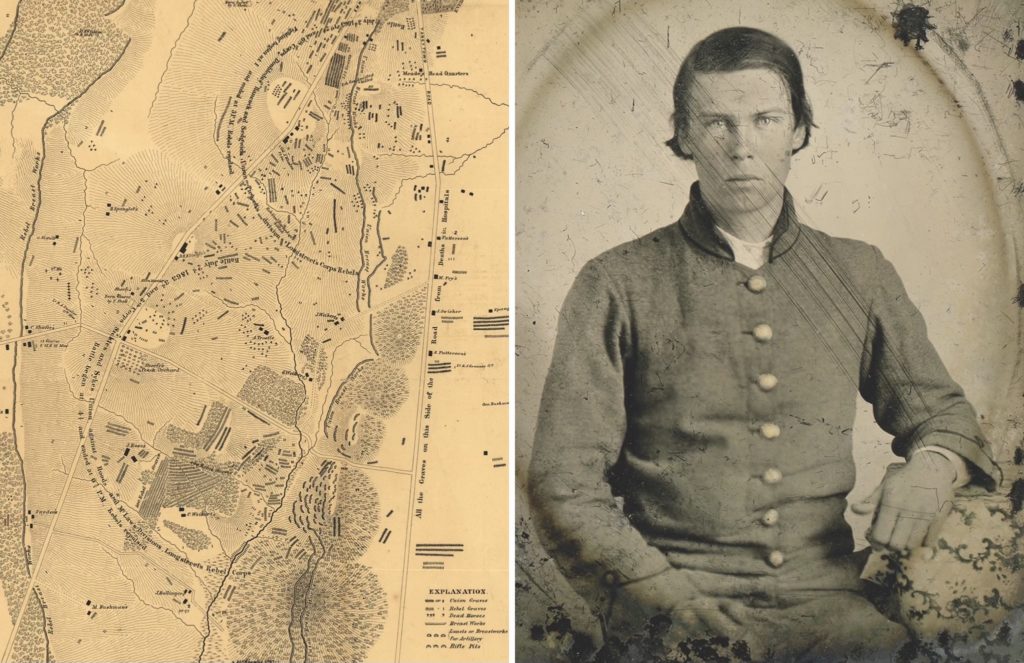
Rose was not the only local farmer who saw the efforts to remove Confederate dead as an opportunity to recoup financial losses suffered during the battle. During that summer of 1871, the family of Lt. Col. David Winn of the 4th Georgia contracted with Weaver to collect and return his body, which had been buried on the David Blocher Farm. But Blocher demanded to be paid for allowing the remains to rest in the ground as long as they had.
Weaver eventually succeeded “through dint of persuasion and shaming” to get Blocher’s permission to exhume the bodies, but at some point Blocher discovered that the dead man, Winn, had worn a gold dental plate to which were attached his false teeth. Blocher removed the plate and refused to give it up until he was given $10. He was eventually paid $5. In a letter written to the family on October 9, 1871, Weaver referred to Blocher’s “depravity and meanness” but assured them that other graves were being cared for and respected by the landowners.
Final resting Places
Later that summer, 100 sets of remains were sent to Savannah, where they were reinterred with ceremonies in August and September. The last exhumations undertaken that year were of North Carolina soldiers. Of the 137 sets of remains sent to Raleigh and honored with a dedication ceremony on October 1 were 45 soldiers buried at Camp Letterman and 27 buried at the Jacob Hanky Farm on the Mummasburg Road, which served as a field hospital for Maj. Gen. Robert Rodes’ Division.
To this point, apparently Weaver had been charged only with recovering identified remains (although the North Carolina shipment included 14 sets that were unidentified). In a letter written to Mrs. K.L. Campbell of Savannah on October 9, 1871, Weaver wrote that he hoped the ladies of Savannah and Raleigh would be able to procure enough aid to allow them to send for their unknown dead in the spring.
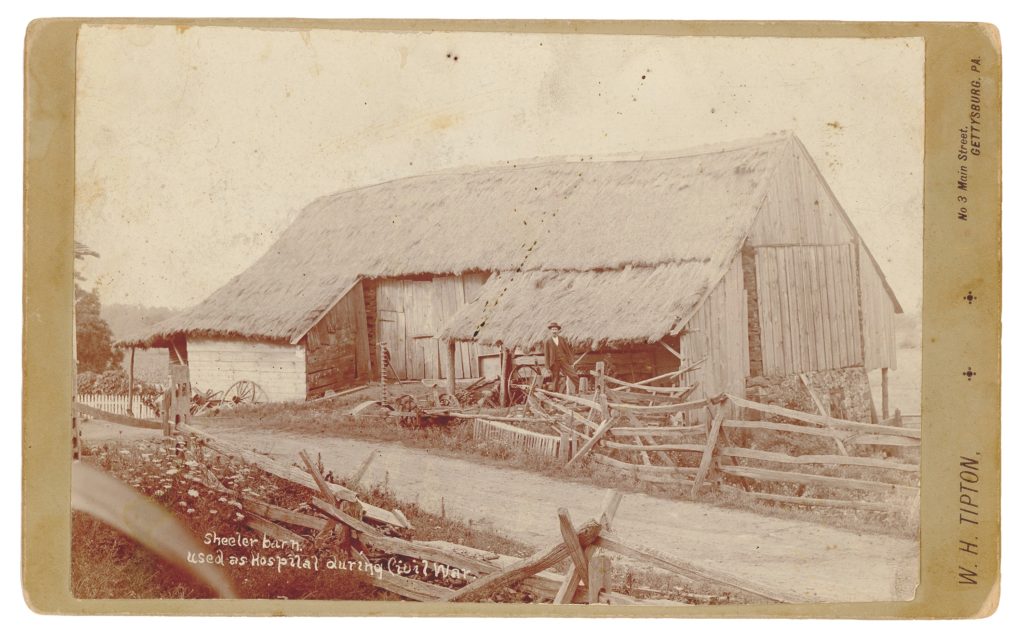
He went on to say that “I have sent South all the State lists and none but you, North Carolina and South Carolina have done anything….It seems very strange to me that Virginia, who is so near and whose known list is not so great as yours does not recall her dead.” He went on to say that “if all could see what I have seen and know what I know, I am sure that there would be no rest until every Southern father, brother and son would be removed from the North.”
It was not long before Weaver heard from the Virginians. In November 1871, Mrs. E.H. Brown, secretary of the Hollywood Memorial Association (HMA) of Richmond, wrote to Dr. Weaver, who by then had returned to his academic post in Philadelphia, and asked that he meet her in Gettysburg in order to “enter into arrangements and make contracts for the removal of the Confederate Virginia soldiers from Gettysburg to Richmond.” She was accompanied by Captain Charles Dimmock, formerly of the Confederate Corps of Engineers, at that time city engineer of Richmond.
Lone Northerner
The visit must have proved satisfactory to all parties, for in February 1872 Weaver supplied Dimmock with a list of the remains he intended to collect and apparently suggested that the ladies apply to the state of Pennsylvania for financial assistance with the project. Dimmock replied that “the suggestion contained in your last [letter] is scarcely available, as our ladies could not ask the aid you propose. They feel assured that in an economical way they can meet all the expenses incident to the removal, and while they would not put aside such voluntary assistance as your Legislature might extend, still they cannot consent to invoke it.” In other words, the proud ladies of Virginia would not ask for aid from any Northerner in this project except Weaver, whom they were paying to do the work.
By April 20, the HMA had forwarded funds so that work could commence as soon as Dr. Weaver could go to Gettysburg. The funds were deposited at Brown Lancaster & Co. of Baltimore, paid to the order of Mrs. A.D. Egerton of that city. Ada Egerton, sometimes referred to as Adeline, came from a family of Southern sympathizers. Her husband was born in Virginia, and his brother, C.C. Egerton, was imprisoned at Baltimore’s Fort McHenry in late July 1862 for suspected pro-Southern activities.
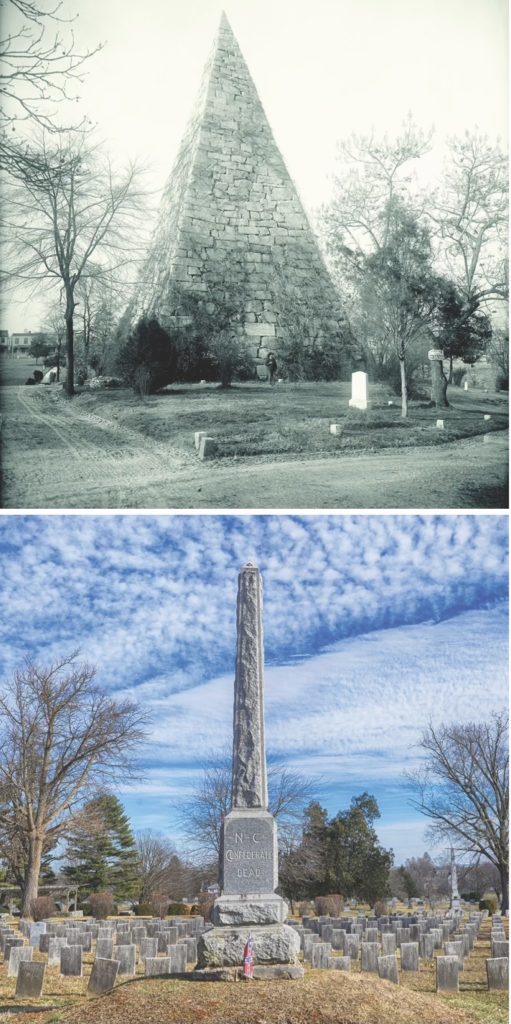
Ada was active in efforts to provide aid to Confederate prisoners at Point Lookout in Southern Maryland during the war, and after the war was very involved with the Southern Relief Society. A great Southern Relief Fair was held in Baltimore in April 1866, the proceeds of which were intended to help recovery efforts in the still devastated South. She was a member of the three-woman committee appointed to distribute funds allocated for the relief of Virginia.
Mrs. Egerton would act as intermediary between Dr. Weaver and the HMA for the next 30 years. While it is probable that she became acquainted with the ladies of the HMA through her association with the Southern Relief Fair, it is unclear how she became acquainted with Weaver. An article in The Baltimore Sun, published shortly after her death in 1906, provides a clue. The article states that Egerton kept a boarding house in Baltimore after the war, and “nearly every distinguished man who came to Baltimore to lecture at the Hopkins [Johns Hopkins University] either stopped with her or visited her house.” In the absence of any other explanation for the connection, it is possible that Weaver might at some point have visited the medical community in Baltimore and been a guest at Mrs. Egerton’s house.
GET HISTORY’S GREATEST TALES—RIGHT IN YOUR INBOX
Subscribe to our HistoryNet Now! newsletter for the best of the past, delivered every Monday and Thursday.
Bigger MIssion
At some point, the ladies of the Hollywood Memorial Association expanded the scope of the enterprise to include all unidentified remains, in addition to the known Virginia dead. Weaver began work in April 1872, writing to Mrs. Egerton, “The farmers are now getting their land ready for corn and I want to do all I can before the fields are planted.” On June 13 a first shipment of 708 remains was sent to Richmond. One week later, the boxes containing the remains were unloaded from steamers at the wharves in Richmond and solemnly escorted through the streets.
The wagons were draped in black bunting, and were accompanied by more than a thousand former Confederate soldiers, among them Generals George Pickett, John Imboden, and James Lane, as well as bands playing mournful dirges. The streets were lined with weeping spectators, and when they were laid to rest on what would become known as Gettysburg Hill in Hollywood Cemetery, the Rev. Dr. Moses D. Hoge thanked God that “our sons and brothers” had been returned from their “graves among strangers.”
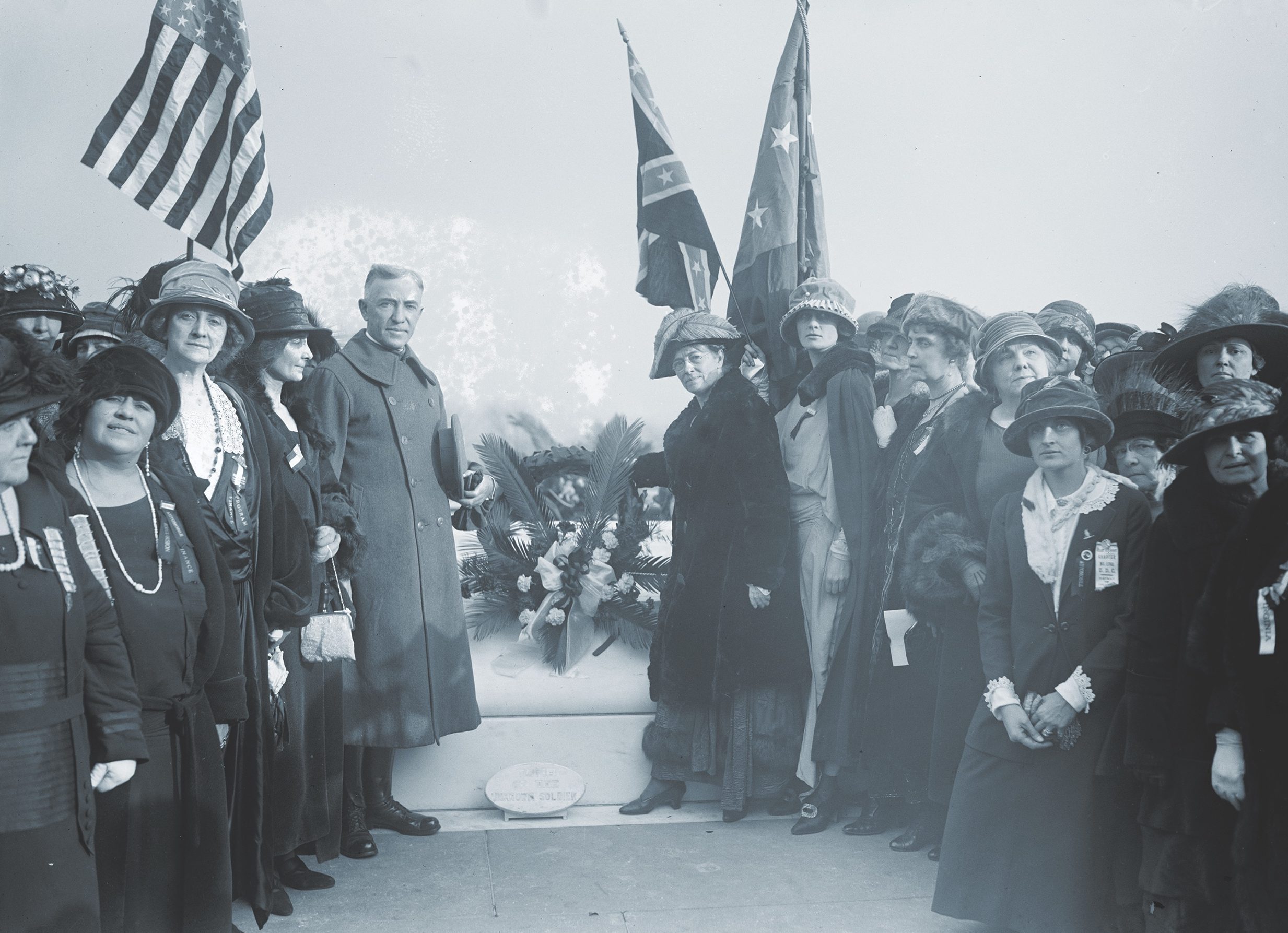
A second shipment of 882 remains was sent August 3, and a final shipment of 683 remains was sent September 10 for that year. The agreed-upon price was $3.25 for each set of remains. Weaver billed the HMA $7,385 for these shipments, but by the end of the year had received just $1,300.
Despite the money still owed to him, Weaver commenced work again in the spring of 1873, shipping 333 sets of remains on May 17 in time for the Memorial Day celebration on Gettysburg Hill. He sent another 256 in June and a final 73 in early October. He was pushing the work as he knew that if it were put off much longer there would be little left to retrieve. “The constant farming over the graves, the remains were generally yielding to decay or absorption, and hence the work had to be done then or never,” he wrote years later. During the summer of 1872, at least, he employed what he referred to as a “full force” of laborers in order to complete the work as quickly as possible, and Weaver was paying the men out of his own pocket. He billed the ladies $2,151 for these shipments, for which he received payments totaling $880.
Why did Weaver continue the job in 1873 when he hadn’t been paid for his labors of 1872? He might have assumed that, based on his prior experience with the ladies of Savannah, Raleigh, and Charleston, that he had no reason to worry, for those associations had paid their bills in full. He had also been assured by Captain Dimmock in early 1872 that the ladies had $4,000 “in hand for the Gettysburg dead.”
Financial Setback
Unfortunately for Weaver and the ladies of the HMA, their funds had been deposited with Maury & Co., a Richmond banking house that fell victim to the Panic of 1873. In June 1873, however, Colonel W. C. Carrington, a member of the Southern Cross Brotherhood in Richmond (a fraternal organization of former Confederate officers), informed Egerton that Mrs. Brown had told him that “she had enough Gettysburg funds to finish removing all our dead from that point but they were in the hands of a banker who will finally pay out but [has] suspended and thus locked the money up for the present.” Carrington told Egerton that Weaver could “safely rely on eventual payment of all due on that score.”
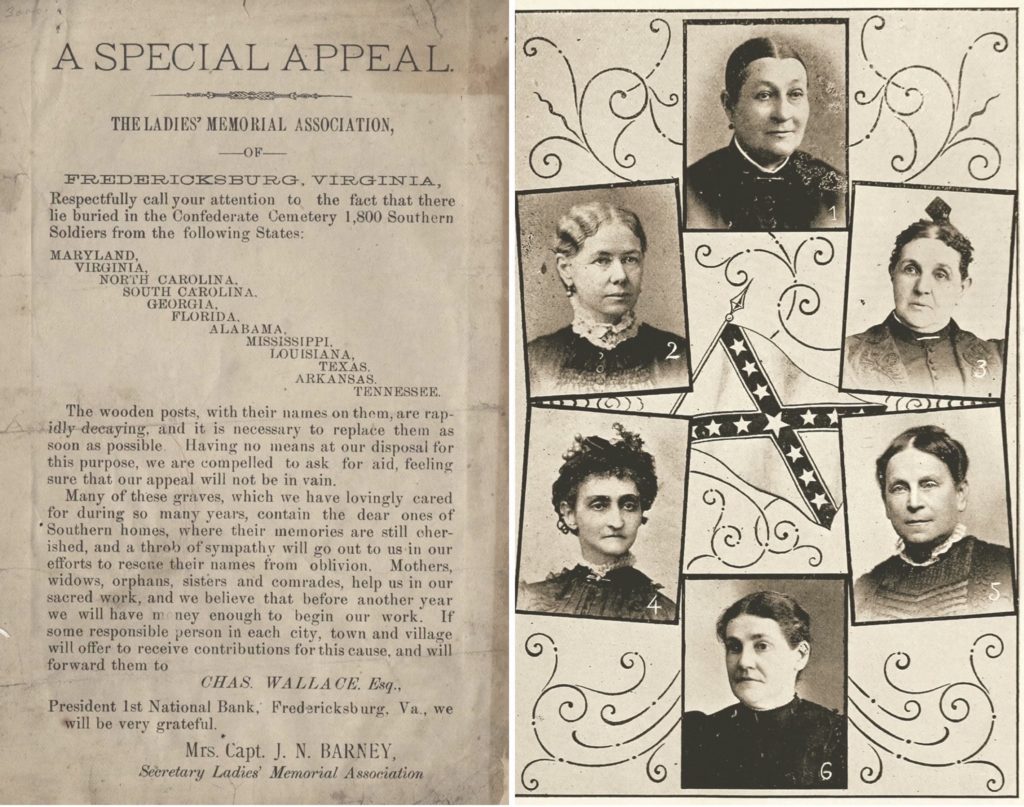
The ladies of the HMA certainly attempted to collect what was due them from Maury & Co. In March 1874, Major Robert Stiles, a Richmond attorney, wrote to Mrs. Egerton that one of the notes due from Maury had come due on March 1. Mrs. Brown went to the bank early that day, he reported, “but nothing could be done. Mr. Maury has given landed security and the matter is eventually secured and Dr. Weaver will certainly secure funds when realized.” Unfortunately, Major Stiles was wrong.
It appears that Weaver received no payments from the HMA between July 1873 and December 1878, at which time he must have again asked Egerton for help. In a December 25, 1878, letter written apparently to Mrs. Brown, Egerton complained that she had “written you from time to time for the past three years on this subject without one word of reply” and informed her that she had asked Stiles and Judge J.H.C. Jones to “see you on this subject.”
It is not known whether Egerton received a reply from any of these parties. Once Confederate dead had been retrieved, and lacking funds for any other enterprises, the HMA essentially dissolved. In early 1889, however, Weaver urged Egerton to make another effort. In addition to the $6,356 of unpaid principal, Weaver calculated interest on the unpaid debt of more than $6,000. “Every now and then I read in the papers of work going on in raising money for the erection of monuments etc. in memory of the Confederate dead, and yet there remains this unpaid debt….My dear Mrs. Egerton, may I urge you to another effort in this long delayed matter which causes me serious embarrassment?”
Egerton responded by calling upon a number of people in Richmond whom she thought might have some influence in the matter, among them Stiles and Dr. Hunter McGuire, and members of the now-revived HMA. The documents she presented caused quite a stir among the ladies of the association. Kate Pleasants Minor, the new secretary of the HMA, referred to it as “thunder in a clear sky.” Many who were members in 1871-73 had died or moved away. Others, when solicited, claimed to have no memory of any such obligations.
Debt Due
After two years spent soliciting former members for information—and, it must be assumed, simply dithering—the ladies finally wrote to Weaver to tell him they had turned the matter over to their all-male advisory board to determine the legitimacy of his claim. Weaver was asked to travel to Richmond to meet with the board, which included such influential members as Robert Bryan, attorney, financier, and newspaper editor; W.E. Cutshaw, who succeeded Charles Dimmock as Richmond city engineer; and Robert Stiles. On December 31, 1891, the Board gave the ladies the unwelcome news that Weaver’s claims were legitimate. They suggested that the ladies sign over to Dr. Weaver their claim against R.H. Maury & Co., amounting to about $3,800 at that time, acknowledging that that amount fell far short of the approximately $12,000 owed.
The ladies sprang into action, but argued that they “could not morally be held responsible for the delay in the payment of a debt of whose existence [they] had all been ignorant” and therefore should not be obliged to pay interest on that debt. Weaver agreed to forgo the interest if the original principal of $6,356 could be paid. The difference between that and the amount expected to be recovered from the Maury bankruptcy amounted to about $3,000. To cover that, the ladies wanted to petition the Virginia legislature for the funds, but the advisory board advised against that.
Recommended for you
The ladies ignored the board and immediately went to work. They petitioned influential members of the legislature, and Board member Joseph Bryan presented their claim before the state Finance Committee. It worked. A payment of $3,000 to Weaver was included in the general appropriations bill. The ladies seemed to feel that the matter was settled, leaving them with no further responsibility.
When notified of the legislature’s action, Weaver wrote a heartfelt letter of thanks to Robert Stiles in which he reveals the level of care and compassion he devoted to the task for which they had engaged his services. “It engaged my time from April 19th to Sep 10th 1872, & from April 9th to Oct 3rd 1873 with the exception of seven weeks which I spent in Washington, D.C. obtaining data and copying over 14,000 names etc from the original records of the Confederate dead. I not only superintended the general work on the field, but personally did the most important part myself, viz picking up the bones for, in the absence of boxes, it required one with Anatomical Knowledge, to gather all the bones; (which workmen could not do) and, regarding each bone important and sacred as an integral part of the skeleton, I’ve moved them so that none might be left or lost.”
“Had I followed the 8 or 10 hour system for a day’s work, it would have taken twice as long to have completed the work….My custom was by, and very often before, daybreak to start out on the field with my men and would not reach home, with precious freight, until dark, & after supper I would arrange, in proper place and order, and Label every remain or lot of remains, and then by the time I had written out the record etc. of each remains it would be midnight & after, for invariably I arranged the records for each day’s work as I went along before retiring, thus generally being engaged from 18 to 20 out of the 24 hours…for the work had to be done then or never….”
Final Notes
It is interesting that on the lists that accompanied each shipment, Weaver made careful notes about the original burial location for each set of remains. Notations like “east of Mr. E. Pitzer’s house in meadow under peach tree” and “under walnut tree at bend of the road on Mr. Crawford’s farm 3½ miles from Gettysburg on Marsh Creek” are common.
Weaver praised the ladies for their efforts but stopped short of calling the debt settled. “When I learn that the Maury estate will yield any adequate percentage of the original debt to warrant my doing so, I will without complaint release all claim for interest, although I have suffered seriously by long waiting for the principal,” he told Kate Minor in a letter dated April 18, 1892.
Weaver was far less sanguine than the ladies about the prospects of recovery from the Maury estate. The ladies accepted without question their male advisors’ assurances that the funds would be recovered. Weaver in fact received three small payments from the Maury estate over the next 12 months totaling $1,250.81. Those were the last payments he would receive.
He did not give up, however. Eight years later, in December 1901, he wrote again to Egerton, asking if she would again go to Richmond, either with him or on her own. By this time, Egerton was more than 70 years old and Weaver was 60. He also wrote to Kate Minor, asking what progress had been made in the settlement of the Maury claim. It is not clear what prompted this letter. Perhaps it was nothing more than the approach of another year’s end that made him want to resolve this matter at last. Whatever the cause, he allowed more than a hint of frustration to seep into this letter. “Well on to nine years have elapsed since I have received any communication from the Association,” he told her. “During this long interval, I have been waiting and hoping most patiently, as I did for twenty years prior to the present Association’s assumption of the responsibility for the debt. Being previously disappointed, and most desirous to know what progress is being made in the settlement of the Maury claim, will you please inform me…what the prospects are for an early payment of the balance ($1196.34) on the principal of the original debt?”
Minor’s response was also less courteous than before. In fact, she was downright dismissive. “We have relinquished to you all our assets [and] have ever since felt that our responsibility was at an end. I am therefore somewhat at a loss to understand why you have been waiting for us to move in the matter. We never undertook to collect anything from the Maury estate….Of course if any of this money had been paid to us we would have needed no reminder from you that we had agreed to turn it over to you.”
This letter was written in pencil, and the thickness with which some words were written conveys the extent of her irritation. “There is absolutely no money to get and no legal steps by which you could secure it if there were” is written in thick strokes.
Two weeks later, Weaver wrote Egerton again, asking her to inquire among her friends in Richmond if there was anything more to be had from the Maury estate. He wrote that he had been told in May 1893 that some land was to be sold in the very near future, yet he “had not had a copper nor a word” since that date.
It appears that Egerton might have taken a different tack this time, for in 1902 a member of the Richmond chapter of the Daughters of the Confederacy reported to the HMA that an appeal had been made to UDC chapters across the South for the funds needed to pay the remaining debt owed to Weaver. Once again, the ladies of the HMA reacted angrily, demanding the UDC cease its efforts in that regard because the matter “is entirely between the HMA and Dr. Weaver.” Their reaction might have stemmed from the growing rivalry between the ladies of the HMA and the newer, larger organization.

The UDC was a product of the 1890s, and its membership and influence were beginning to eclipse that of the older memorial associations. While the ladies of the HMA primarily were concerned with honoring the dead, the younger members of the UDC were focused on influencing the future by shaping the minds of the young. Weaver’s legitimate claim unfortunately fell victim to the animosity of the HMA toward the UDC.
Why didn’t Weaver sue the HMA for the money he was owed? The clue to that lies in a comment made in a draft letter written by a member of the HMA in late 1891. “Having been first organized when Virginia was under military rule, [the HMA] had never been incorporated.”Having no corporate body to sue, his only recourse would be to sue the ladies individually or continue to rely on their sense of honor.
If Weaver ever received another “copper” from the Maury estate or the HMA, there is no record of it. Although he wrote that their failure to reimburse him had caused him “serious embarrassment,” his medical career appears to have provided him with enough income to live comfortably. He continued to feel, however, that he had been used poorly by the ladies of the HMA. “In a moral respect,” he wrote to Egerton in April 1889, “the debt is one of honor, so sacred that any individual or organization should blush for shame one would think to permit it to go unpaid. All the lawyers in the land cannot wipe out the sacred obligation imposed on the Association for its liquidation.”
“You can inform them,” he goes on to say, “that my confidence was so implicit in them (Virginians!)” he emphasized, “that I suggested to the association per Capt. Dimmock that you should be the ‘go between’ them and me,” feeling that her involvement—“one of their own,” he called her—would make them more comfortable in their dealings with him, a stranger.
Their Work Done
Ada Egerton died four years later at age 77. Rufus Weaver lived to the ripe old age of 95, passing away peacefully in 1936. His obituary in The Philadelphia Inquirer lauds his long career as a professor of anatomy at Hahnemann Medical College in Philadelphia, where he became famous for being the first person to successfully dissect the complete cerebrospinal nervous system of a human being. That dissection contributed greatly to medical education and is still on display at Drexel University College of Medicine. The obituary says nothing, however, about his selfless efforts to return the Confederate dead at Gettysburg to their native soil, efforts that went largely unrewarded.
His tombstone in Mount Vernon Cemetery in Philadelphia is a simple affair, engraved only with his name, date of birth, and date of death. In recent years, however, Weaver has begun to receive the recognition he deserves. His efforts are noted on a beautiful monument erected in Raleigh’s Oakwood Cemetery in 1997, where 137 sets of remains that Weaver recovered were reinterred in 1871. In 2014, a bronze marker honoring Weaver was erected on Lefevre Street in Gettysburg, and in 2015 a similar plaque was placed in Hollywood Cemetery, on Gettysburg Hill, “acknowledging a debt of honor owed by all Southerners, and recognizing his generosity and humanity.” Perhaps, after all, it’s better to be memorialized in bronze than to be paid in coppers.
historynet magazines
Our 9 best-selling history titles feature in-depth storytelling and iconic imagery to engage and inform on the people, the wars, and the events that shaped America and the world.


